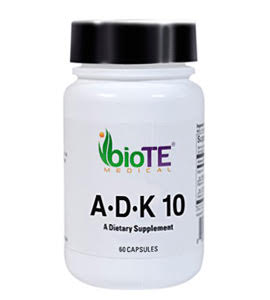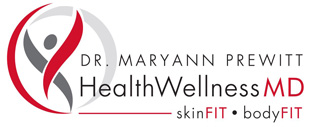VITAMIN D
People are living longer than ever and want more out of every day. Modern medicine has increased our longevity to such a degree that people are routinely living well into their 90s. And, if the predictions of some futurists are accurate, we could be living to be 120 by the year 2025. This all sounds pretty exciting, but longevity comes at a price. As we live longer, we do not always live better: we suffer from chronic pain, we are isolated and lonely, and we take more drugs. In far too many cases, I see patients taking more drugs than they actually need—drugs with pernicious side effects that negatively impact the way the body functions. The power of nutrition to improve health, on the other hand, is often ignored by conventional physicians. I’d like to change that.
Of course, many factors influence your overall health and wellness. Things like genetics, stress, exercise, and lifestyle choices all contribute to the state of your health. Your nutritional choices however are paramount and can help determine how you react to environmental and genetic variables. More than a billion people worldwide suffer from D-deficiencies; alarmingly, most have no clue. The majority of modern Americans, particularly those of us who live and work in urban environments, need more Vitamin D than we currently take in—especially during cold weather months when sunlight is scarce. Scientists know that Vitamin D supplements are highly effective in improving D-levels while also providing more health benefits than previously believed. This news, however, has been slow to filter down to the general public.
I see patients on a daily basis who are surprised to learn that they have dangerously low levels of Vitamin D. Many Americans have no idea that they need to add daily D supplements to their diet. Still others tell me that they are already taking supplements from their neighborhood health food or drug store. What they don’t know is that many such widely available vitamins are inferior, and worse, ineffective. That’s why I encourage all of my patients to purchase only medical-grade nutrcaeuticals.


Vitamin D a Miracle Cure?
For some time, researchers have documented the vital role of Vitamin D in the skeletal development of children and in the maintenance of bone health as people age. Milk producers have added Vitamin D to the U.S. milk supply to augment calcium absorption, which is necessary for bone growth. And we know that Vitamin D can prevent bone diseases like osteoporosis and rickets. But the benefits of this multi-tasking nutrient hardly stop there.
Just how important is Vitamin D for your overall health? Think about this: everyone who dies has low D3 levels. Low D3 is the number one predictor of morbidity (disease) and mortality (death). If I were traveling to Mars on a 15-year mission and NASA gave me a choice of which astronauts to take with me, I’d choose only those with a Vitamin D of at least 100 ng/ml. Why? Because, I’d want to assemble a strong team to go up in space—an astronaut is no good to the mission, if she is sick or dead.
Positive Non-skeletal Impacts of Vitamin D
Recent research continues to provide evidence of the numerous non-skeletal benefits of Vitamin D. Nerve, muscle, and cardiovascular health—as well as proper immune system functioning—all depend upon this essential organic compound. New studies confirm that Vitamin D helps fight many forms of cancer. Low D3 is implicated in cancer of the colon, breast, prostate, ovaries, as well as colorectal, lung, esophageal, kidney, and bladder cancer. So, if you know you have a history a cancer, you’d be wise to dose your Vitamin D daily. For our thyroid to function properly, we also need to maintain a steady store of D. Keeping your D levels up, can even help keep pounds down.
And this is big! The introduction of additional Vitamin D, known as the “sunshine vitamin,” has a positive effect on many patients with depressive disorders. This impact is particularly true for those who suffer from Seasonal Affective Disorder (SAD). Some patients may even be able to stop taking their antidepressant medications once their D returns to healthy levels. This is why I opt for medical-grade nutraceuticals over pharmaceuticals for my patients whenever possible. Of course, you always want to consult your mental healthcare provider before changing your medication protocols. However, over-medication presents a whole new set of health challenges.
What Can D Do for Me?
Adding this multitasking nutrient to your diet can have a myriad of positive health benefits. The goal is to get your D levels up to 100 ng/ml. Studies show that people with D3 levels below 15 ng/ml were twice as likely to experience a heart attack, stroke,or other cardiovascular event. And, you should know that optimizing your D levels will take some time. So, the sooner you start supplementing with D, the better.
Positive Health Benefits of D:
- improved cardiac health and reduced risk of congestive heart failure
- prevention of strokes, heart attacks, and hypertension
- reduces plaque formation and increases heart muscle oxygenation
- prevention of many chronic diseases, including autoimmune disorders
- improved neuromuscular and lower extremity function in older adults
- enhanced muscle strength and improved balance
- reduction of the inflammatory processes associated with disease
- increased muscle strength and substantial decrease in risk and death from falls
- fights a wide range of cancers in women and men
- prevention of clinical depression and Seasonal Affective Disorder
- improved thyroid function & weight-control
- reduced mortality rates: low Vitamin D is a predictor of all-cause-mortality
Supplement Your Health and Your Mood with Vitamin D
You can get Vitamin D in three ways: from absorption of sunlight through the skin, from your diet, and from supplements. One of the best sources comes directly from the sun penetrating the skin. The human body intrinsically craves sun-derived D—after exposure to sunlight, your body synthesizes Vitamin D naturally. However, people today spend much more time indoors (on computers, in cars/trains, at work) than our primitive ancestors. The modern human body, including the brain, simply has not evolved at the pace set by modern technology—technology that has resulted in a lifestyle that continues to chip away at the hours people spend outdoors. Because of this, you must take deliberate steps to get moderate amounts of sun (15 to 20 minutes) on a daily basis.
Vitamin D also benefits mental health status and helps to ward-off certain types of depression. D-deprivation may partially explain why so many people feel “blue” during winter months and suffer from SAD when the days offer sparse, weak sunlight. Countries with a short supply of sunlight, day in and day out, such as Finland and Iceland report the highest suicide rates. Have you ever wondered why there’s an increase of heart attacks around winter holidays? Seasonal lack of sun exposure has been implicated. Citizens of countries with consistently poor levels of sunlight must take Vitamin D supplements or eat D-fortified foods on a daily basis. If you’re fortunate enough to live in an area with lots of sunlight, make sure you soak it in responsibly.
How Much D You Need
Know that Vitamin D cannot work alone. This is why I do not simply write a prescription for Vitamin D and call it a day. Many conventional physicians fail their patients in doing so. Nutrients act synergistically, meaning in concert, so one is typically not enough to affect real change. For example, for the millions of patients suffering from osteoporosis, their physician likely recommends supplementing with calcium, which is fine, but incomplete. Calcium alone accomplishes little to nothing for the treatment or prevention of osteoporosis. However, when the patient adds Vitamin D and K2 to their regimen, significant improvements can occur. D is essential for the absorption of calcium and the prevention of rickets in children and osteoporosis in adults. That’s why milk providers have been fortifying milk products with Vitamin D for decades.
Similarly, for Vitamin D to do its job it needs the help of other vital nutrients, or co-factors—in this case your body also needs Vitamin K2 and A. So, I encourage my patients to supplement with an A-D-K combination nutraceutical from BioTE Medical. Conventional medicine also fails when it comes to the daily-recommended dosage of D. Standard levels fall far below the recommendations of Functional Medicine practitioners. Healthy adults need to supplement with a minimum of 5,000 IUs daily to maintain a Vitamin D level of 100 IUs and up to 10,000 IUs daily if Vitamin D if deficient. I always tell my patients be patient; achieving optimal D levels could take up to a year-and-a-half, depending on just how low your levels were to begin with.
Getting D From Your Diet
While I recommend eating many D-rich foods, you should know it’s almost impossible to consume adequate amounts from your daily diet. Foods like eggs, cod liver oil, and fish such as salmon, tuna, mackerel, and sardines deliver a decent dose of D. Although some yogurts are fortified with Vitamin D, not all are, so don’t assume—make sure to read the labels. The second best source of D comes from quality medical-grade supplements and taking them makes dosage easy to track. As always, check with your healthcare provider for advice about how much supplemental D you need. And, remember Vitamin D is best absorbed at mealtime, and preferably with healthy fats. I take mine with avocados, nuts, or olive oil…for thyroid function, mental health, cardiovascular health, bone health, and beyond.
Dr. Prewitt’s Last Word
For those of you with atherosclerosis, forward-thinking cardiologists are beginning to use Vitamin and K2 and Vitamin D to reverse the narrowing of the aorta without surgery. Wouldn’t you rather simple take your nutraceuticals than have open-heart surgery? Think about it.

